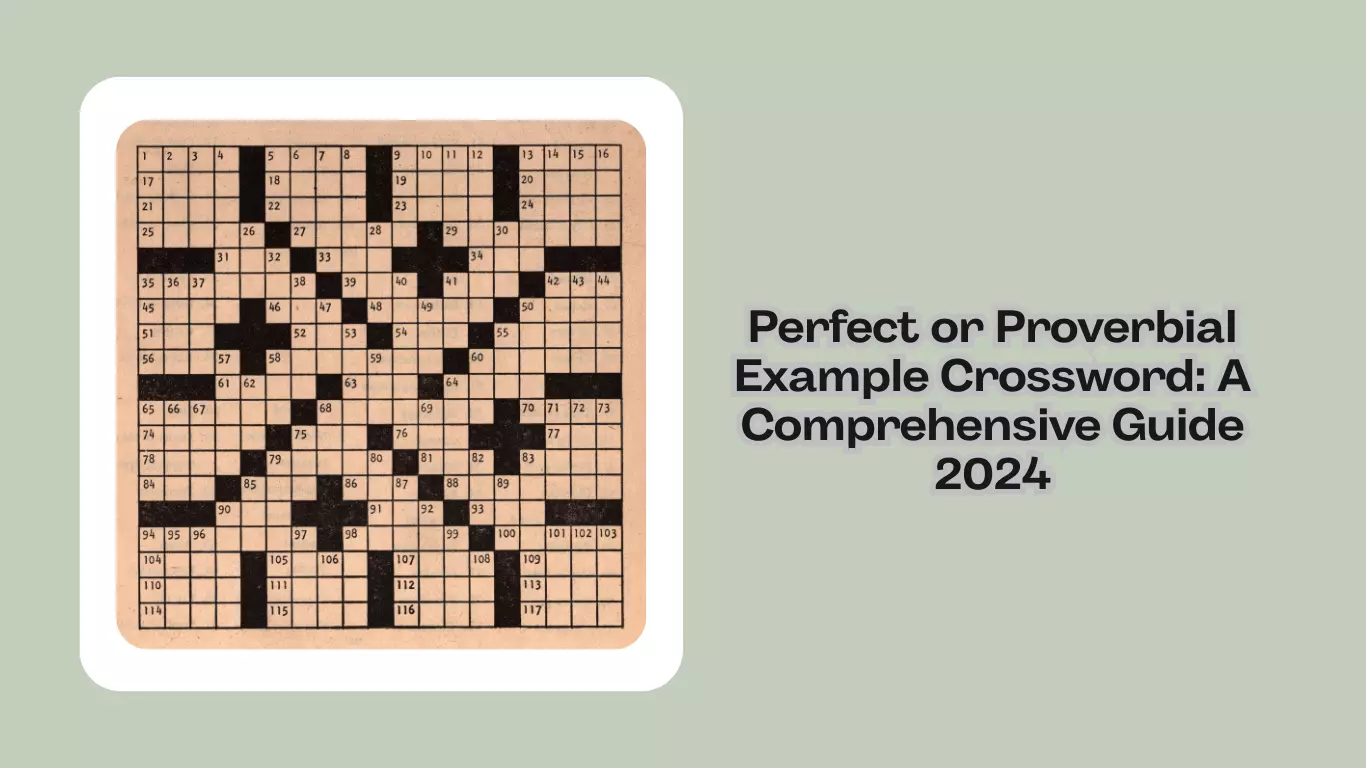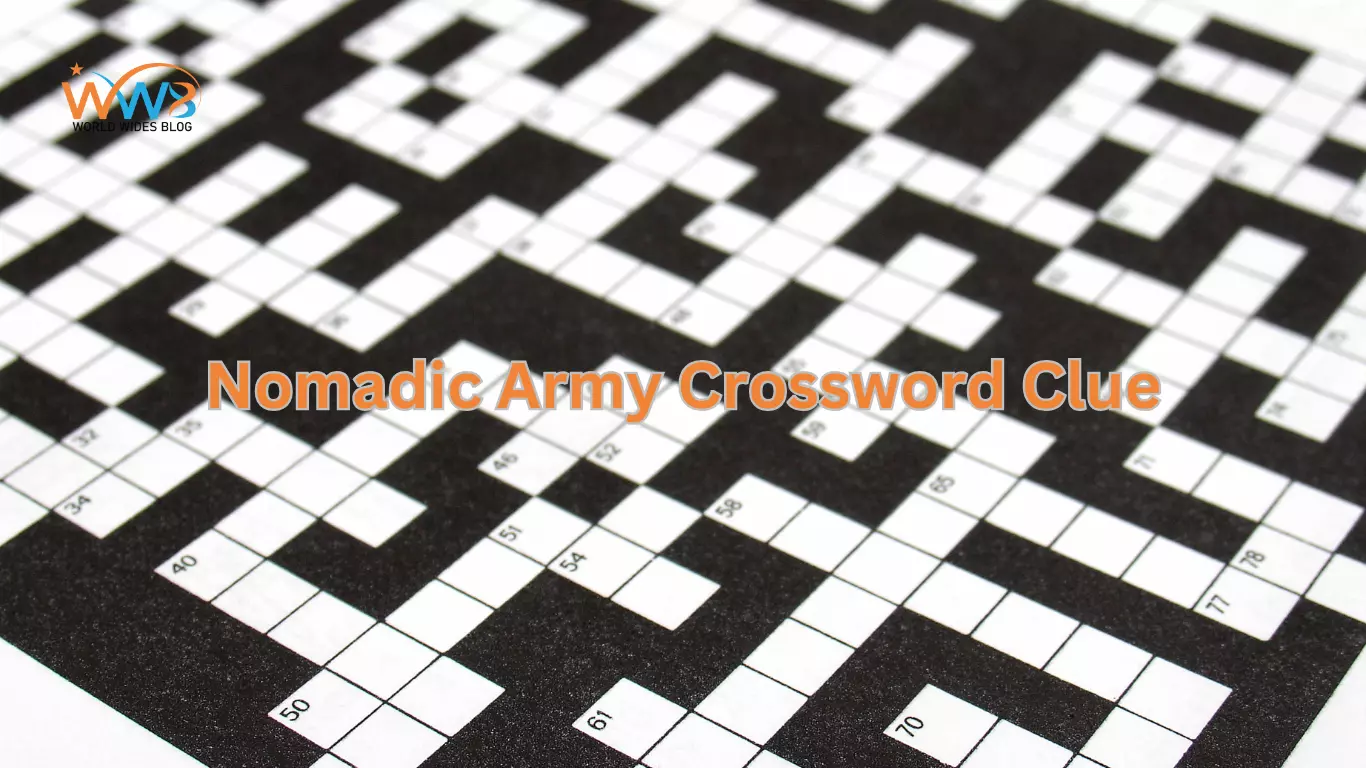Crosswords have been a favorite hobby for many years. They are fun and challenging for people of all ages, and their ability to engage the mind while providing a sense of accomplishment is unparalleled. Among the various themes crosswords can adopt, the “Perfect or Proverbial Example Crossword” theme stands out for its unique blend of linguistic richness and intellectual challenge. In this article, we’ll dive deep into the world of proverbial examples in crosswords, exploring their significance, structure, and strategies for solving them.
What is a Proverbial Example?
A proverbial example is a phrase or saying that has become widely accepted as a truth or piece of wisdom, often derived from traditional, cultural, or historical contexts.
These proverbs encapsulate everyday experiences and observations concisely and usually metaphorically.
For example, “A stitch in time saves nine” means that doing something early can stop bigger problems later.
Why Perfect Examples Matter in Crosswords
Perfect examples of proverbs in crosswords play a crucial role in enriching the solver’s experience. They challenge the mind to think beyond literal meanings, fostering cognitive flexibility and improving problem-solving skills. Additionally, they help expand one’s vocabulary and deepen their understanding of language nuances.
Types of Crosswords
Crosswords come in various forms, each with its unique appeal:
- Themed Crosswords: These puzzles revolve around a central theme, with clues and answers related to it.
- Cryptic Crosswords: Known for their challenging and obscure clues, requiring solvers to decode puns and wordplay.
- Quick Crosswords: Typically straightforward, focusing on definitions and general knowledge.
- General Knowledge Crosswords: These puzzles test the solver’s general knowledge across various subjects.
Structure of a Crossword Puzzle
A typical crossword puzzle consists of a grid layout filled with black and white squares. Each white square is part of an answer that fits into the grid either across or down. Clues are provided for each entry, guiding the solver towards the correct answers.
Crafting the Perfect Crossword Clue
Creating engaging and challenging crossword clues is an art. A good clue should be concise and witty, leading the solver to think creatively. Tips for crafting clues include:
- Using wordplay and puns
- Incorporating double meanings
- Referencing popular culture and current events
Popular Themes in Crosswords
Crosswords often draw inspiration from various themes to keep solvers engaged. Common themes include:
- Literary References: Clues and answers related to books, authors, and literary terms.
- Historical Events: Puzzles that test knowledge of significant historical occurrences.
- Pop Culture: Incorporating elements from movies, music, and celebrities.
The Role of Proverbial Examples in Crosswords
Proverbial examples are frequently used in crossword puzzles due to their familiarity and depth. Common proverbs like “Actions speak louder than words” or “The early bird catches the worm” are often incorporated into clues, challenging solvers to decode their meanings and find corresponding answers.
Strategies for Solving Proverbial Example Crosswords
Solving Perfect or proverbial example crossword requires a strategic approach:
- Analyzing the Clue: Look for hints within the clue that might suggest a proverbial phrase.
- Breaking Down the Proverb: Consider the literal and figurative meanings of the proverb.
- Using Context: Apply the context of the clue to narrow down possible answers.
Benefits of Solving Crosswords
Engaging with crosswords offers numerous benefits:
- Mental Stimulation: Crosswords challenge the brain, enhancing cognitive functions.
- Stress Relief: Focusing on solving puzzles can be a relaxing and enjoyable activity.
- Vocabulary Expansion: Regularly solving crosswords helps in learning new words and phrases.
Famous Crossword Puzzles and Their Proverbial Examples
Many crossword puzzles have gained fame for their clever use of proverbial examples. These puzzles are often featured in renowned publications and are celebrated for their ingenuity.
The Evolution of Crosswords
Crosswords have a rich history, evolving from simple word puzzles to complex, themed challenges. Digital crosswords have made it easier for people worldwide to access them.
Crossword Puzzle Apps and Tools
For enthusiasts, several apps and tools are available to enhance the crossword-solving experience. Popular apps include:
- Crossword Solver: Provides hints and solutions for challenging puzzles.
- NY Times Crossword: Offers daily puzzles from The New York Times.
- Crossword Compiler: A tool for creating custom crossword puzzles.
Crossword Communities and Competitions
The crossword community is vibrant and active, with numerous online forums and major competitions. These platforms allow enthusiasts to share puzzles, discuss strategies, and participate in contests.
Conclusion
Crosswords, especially those incorporating Perfect or proverbial example Crossword, offer a unique blend of challenge and enjoyment. They help you think better and learn new words. They also make you feel accomplished. Whether you’re experienced or just starting, doing crosswords can be fun and rewarding.
FAQs
What is the best way to start solving crosswords?
Begin with more straightforward puzzles, familiarize yourself with common clues, and gradually move to more challenging ones.
Are crosswords good for mental health?
Yes, crosswords are excellent for mental health as they stimulate cognitive functions and can reduce stress.
How do I improve my crossword-solving skills?
Practice regularly, learn standard crossword conventions, and engage with the community for tips and strategies.
What are some common proverbial examples in crosswords?
Common proverbs include “A penny saved is a penny earned.” and “When in Rome, do as the Romans do.
Can crosswords help with learning a new language?
Absolutely! Crosswords can enhance vocabulary and comprehension in a new language by providing contextual clues and engaging learning methods.











